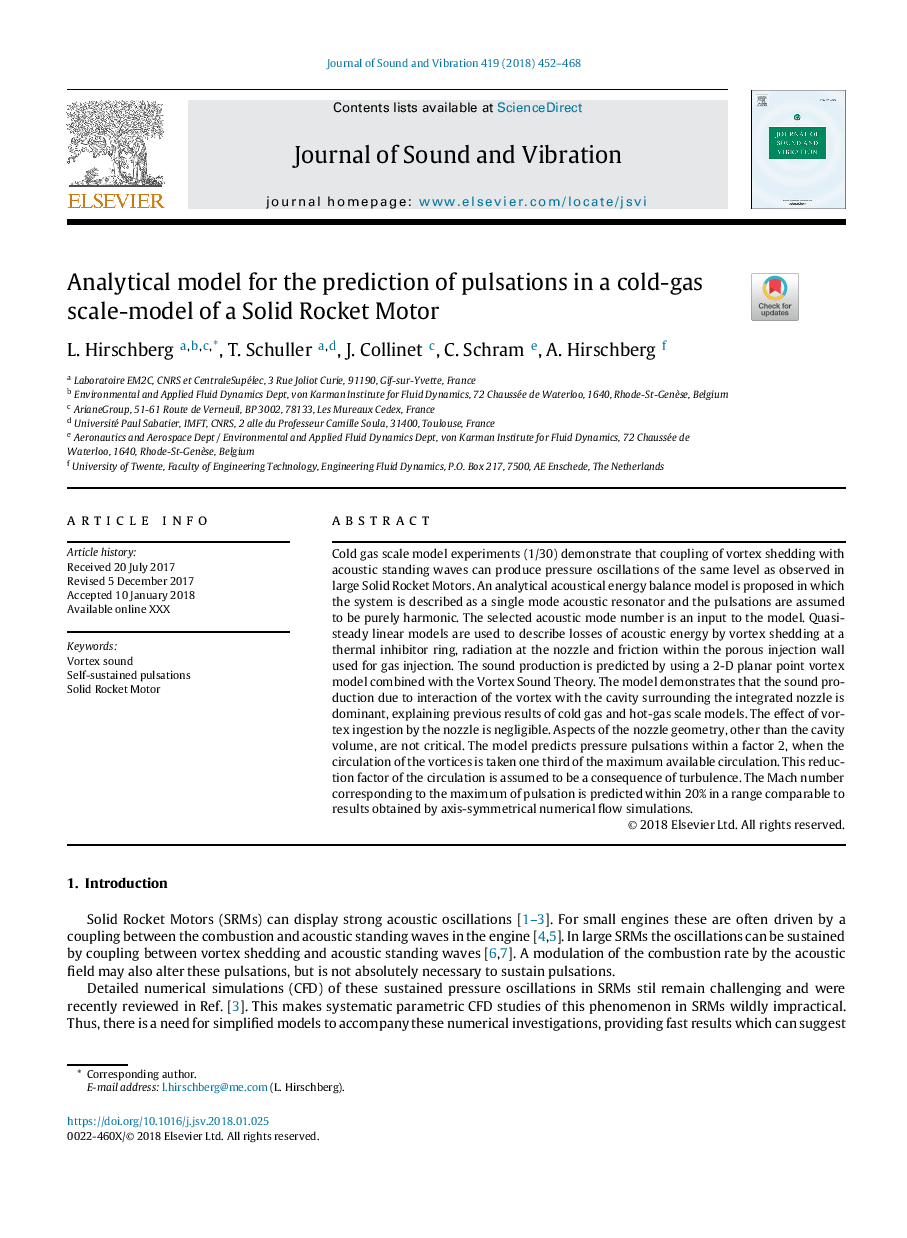ترجمه فارسی عنوان مقاله
مدل تحلیلی برای پیش بینی پالسها در یک مدل مقیاس سرد گاز یک مدل راکت موتور جامد
عنوان انگلیسی
Analytical model for the prediction of pulsations in a cold-gas scale-model of a Solid Rocket Motor
| کد مقاله | سال انتشار | تعداد صفحات مقاله انگلیسی |
|---|---|---|
| 151748 | 2018 | 17 صفحه PDF |
منبع

Publisher : Elsevier - Science Direct (الزویر - ساینس دایرکت)
Journal : Journal of Sound and Vibration, Volume 419, 14 April 2018, Pages 452-468
ترجمه کلمات کلیدی
صدای گرداب پالس های خودمراقبتی، موتور راکت جامد،
کلمات کلیدی انگلیسی
Vortex sound; Self-sustained pulsations; Solid Rocket Motor;

